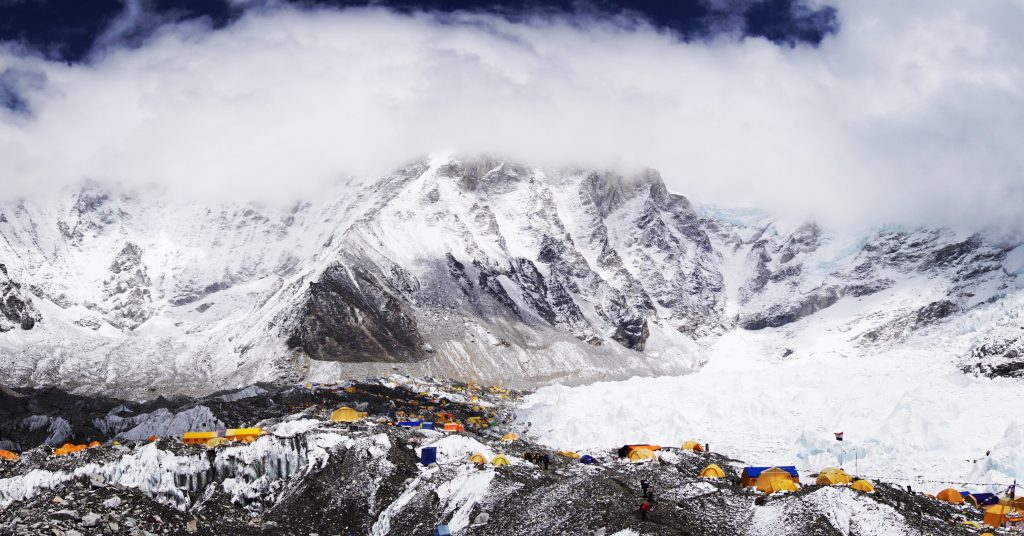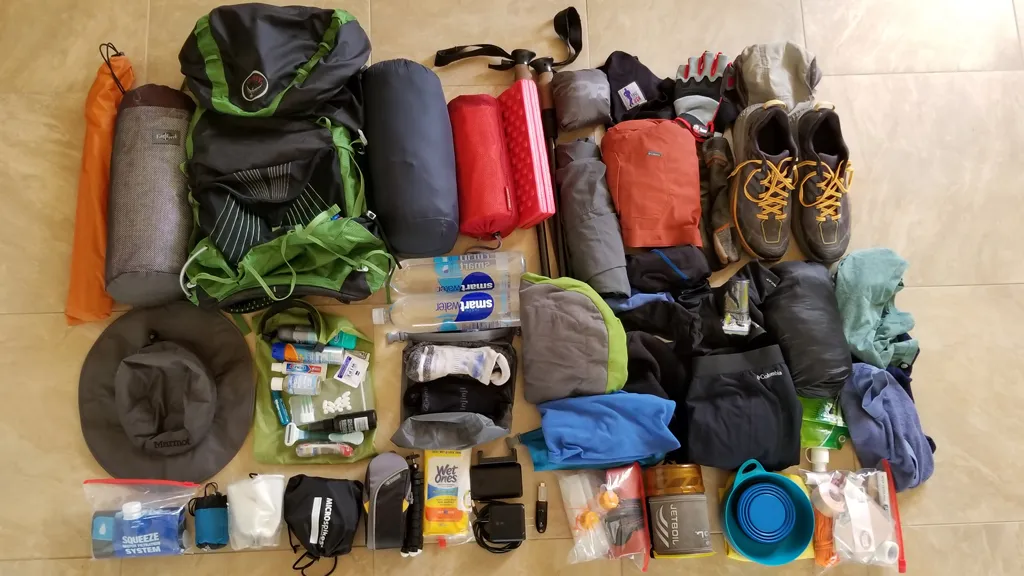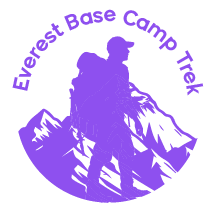How Can Beginners Get Started with Trekking in Nepal?
How can beginners get started with trekking in Nepal? This question is the gateway to an incredible adventure filled with stunning landscapes, vibrant cultures, and unforgettable experiences. Trekking in Nepal offers a unique opportunity to explore the majestic Himalayas, but it can feel overwhelming for those new to the activity. From selecting the right trekking route to preparing essential gear and understanding local customs, there’s a lot to consider. This guide will provide you with the essential tips and insights needed to embark on your trekking journey confidently, ensuring you enjoy every step along the way. Let’s explore how you can turn your trekking dreams into reality!
1. Choose the Right Trekking Route
Overview of Popular Treks
Nepal is home to numerous trekking routes, each with its unique features, challenges, and attractions. Here are some beginner-friendly treks that you might consider:
Ghorepani Poon Hill Trek
Ghorepani Poon Hill trek is one of the most famous and accessible treks in the Annapurna region, ideal for those new to trekking.
- Key Highlights: The primary highlight of this trek is the breathtaking sunrise at Poon Hill (3,210 meters). Imagine waking up before dawn, hiking in the cool morning air, and witnessing the golden sun illuminating the peaks of Annapurna and Dhaulagiri. This experience is often cited as a bucket-list moment for many trekkers.
- Cultural Encounters: Along the trail, you’ll pass through charming Gurung and Magar villages, where you can interact with locals and learn about their traditions. The hospitality of the local people is heartwarming, often making you feel at home despite being far away.
Langtang Valley Trek
Located north of Kathmandu, the Langtang Valley trek is another excellent option for beginners, offering stunning scenery and cultural richness.
- Cultural Immersion: This trek allows for immersion in the local Tamang culture, characterized by Tibetan influences. Visiting monasteries and engaging with villagers provides a deep insight into their way of life.
- Scenic Diversity: The trek features diverse landscapes, from lush green forests to rugged mountains. The majestic Langtang Lirung peak (7,227 meters) looms large in the background, making every step worthwhile.
Everest View Trek
For those dreaming of seeing Mount Everest but not ready for the strenuous Everest Base Camp trek, the Everest View Trek is an ideal alternative.
- Stunning Views: This trek takes you to Namche Bazaar, the gateway to the Everest region, where you can enjoy spectacular views of Everest and neighboring peaks. The trek is relatively short and can be completed in about a week, making it suitable for beginners.
- Cultural Significance: Namche Bazaar is a bustling town filled with shops, cafes, and a rich Sherpa culture. Take time to visit the local market and learn about the customs and lifestyles of the Sherpa people.

Consider Duration and Difficulty
When choosing a trek, consider how much time you can dedicate.
- Shorter Treks (4-5 Days): Ideal for those who may not have much time but still want to experience the beauty of the Himalayas. Shorter treks allow you to build confidence without overwhelming yourself.
- Moderate Treks (7-10 Days): These treks offer a deeper experience and often require more physical preparation. Be sure to engage in regular physical activity leading up to your trek to build endurance.
Research and Plan
Thorough research is crucial for a successful trekking experience. Here are some strategies to help you prepare:
- Online Resources: Websites like Trekking Partners and local tourism boards offer valuable insights into routes, seasons, and safety tips. Join trekking forums or social media groups where experienced trekkers share advice and recommendations.
- Guidebooks and Maps: Invest in a comprehensive trekking guidebook and a detailed map of the area. These resources can provide information on trail conditions, required permits, and accommodations, helping you plan your itinerary effectively.
- Local Weather Patterns: Understanding the weather conditions during your planned trekking season (spring and autumn are generally the best) will help you pack appropriately and plan your daily itineraries.
2. Get the Right Gear
Essential Gear List
Having the appropriate gear is crucial for comfort and safety while trekking. Below is a detailed checklist of essential items:
Footwear
- Trekking Boots: A good pair of waterproof trekking boots is non-negotiable. Look for boots with a sturdy sole, good ankle support, and breathable materials. Brands like Salomon, Merrell, and KEEN offer excellent options. Remember to try them on with the socks you intend to wear on the trek.
- Break Them In: Wear your boots on shorter hikes or walks to break them in. This will prevent blisters and ensure that they fit comfortably.
Clothing
- Layering System: The mountain climate can be unpredictable, so layering is essential:
- Base Layer: Choose moisture-wicking thermal shirts and leggings to keep you dry and comfortable.
- Mid Layer: Insulating fleece or down jackets provide warmth. Look for lightweight options that pack easily.
- Outer Layer: A waterproof and windproof jacket will protect you from rain and wind. Opt for breathable materials to avoid overheating.
- Trekking Pants: Lightweight, quick-drying trekking pants are ideal. Consider bringing convertible pants that can be zipped off into shorts for added versatility.
Backpack
- Capacity: A backpack with a capacity of 30-50 liters is suitable for short to moderate treks. It should fit comfortably and distribute weight evenly.
- Features to Look For: Padded shoulder straps, a hip belt for support, and multiple compartments for organization will make your trek more manageable. Consider a pack with a rain cover, as weather can change unexpectedly in the mountains.
Accessories
- Trekking Poles: These provide stability and reduce strain on your knees, especially during steep descents. Consider lightweight, collapsible poles for easy storage.
- Sleeping Bag: A high-quality sleeping bag rated for cold temperatures is essential for comfortable nights in the mountains. Look for options that are lightweight and compressible.
- Sun Protection: Don’t forget sunscreen with high SPF, a wide-brimmed hat, and sunglasses to protect against harmful UV rays. Sun exposure is intensified at high altitudes.
Trial Run
Before your trek, take shorter hikes with your gear to test comfort and fit.
- Packing Smart: Aim for a balanced load by packing heavier items closer to your back and lighter items at the top. This distribution will improve your balance and comfort, especially during long days of trekking.
Additional Gear Considerations
- First Aid Kit: Carry a small first aid kit with essential items such as band-aids, antiseptic wipes, pain relievers, and any personal medications.
- Multi-tool or Knife: A lightweight multi-tool can be handy for various situations, from preparing food to making minor repairs.
- Portable Charger: Ensure you have a portable charger for your electronics, as power sources may be limited in remote areas.
3. Acclimatize Slowly
Understanding Altitude Sickness
Altitude sickness, or acute mountain sickness (AMS), can occur when ascending to elevations above 2,500 meters (8,200 feet) too quickly.
- Symptoms to Watch For: Common symptoms include headaches, nausea, dizziness, fatigue, and difficulty sleeping. In severe cases, it can lead to life-threatening conditions like High Altitude Pulmonary Edema (HAPE) or High Altitude Cerebral Edema (HACE).
Plan for Rest Days
Incorporate rest days into your trekking itinerary.
- Strategic Stops: For example, if you’re trekking in the Langtang Valley, consider spending an extra day at Kyanjin Gompa (4,830 meters) to acclimatize before heading higher. This practice significantly reduces the risk of altitude sickness.
- Hydration and Nutrition: Drink plenty of water and eat high-carbohydrate meals to aid acclimatization. Foods rich in carbohydrates provide the energy needed for your body to acclimatize effectively.
Listen to Your Body
Pay attention to how you feel as you ascend.
- Immediate Descent: If you experience symptoms of altitude sickness, descend immediately. It’s crucial to prioritize your health over reaching a particular destination. Always trust your instincts; if something doesn’t feel right, it’s better to be cautious.
4. Stay Hydrated and Eat Well
Hydration Tips
Staying hydrated is vital for maintaining energy levels and preventing altitude sickness.
- Daily Water Intake: Aim to drink at least 3-4 liters of water daily, especially at higher altitudes. Dehydration can exacerbate altitude sickness and fatigue.
- Water Purification: Use water purification tablets or a filtration system to ensure access to clean drinking water along the trail. Many teahouses also provide boiled water, which is safe to drink.

Nutritional Choices
Nutrition plays a significant role in sustaining your energy levels while trekking.
- Local Dishes: Don’t miss out on local cuisine. Dishes like dal bhat (rice and lentils) provide essential nutrients and are filling. The combination of carbohydrates and proteins will fuel your body effectively.
- Snacks: Pack lightweight snacks like nuts, dried fruits, and energy bars for quick energy boosts during your trek. Having a variety of snacks will help keep your morale high.
Meal Planning
Most teahouses along popular trekking routes offer meals, but it’s good to have a few snacks on hand.
- Familiarize Yourself with Menus: Before heading out, check menus and local food options, especially if you have dietary restrictions. Many trekkers find that the local dishes are both delicious and nourishing.
- Try Local Beverages: Consider trying local drinks like masala tea or Nepali coffee for a warm pick-me-up after a long day of trekking.
5. Find a Reliable Guide
Benefits of Hiring a Guide
Hiring a local guide can enhance your trekking experience in numerous ways.
- Local Knowledge: A guide can help you navigate the trails, explain local customs, and point out significant landmarks. Their experience can improve your safety and overall experience. For instance, they can help you avoid common pitfalls, such as taking the wrong trail or underestimating the time needed to complete a leg of the journey.
- Logistics Management: A guide will handle logistics like permits, accommodations, and meals, allowing you to focus on enjoying the trek without worrying about the details. They can also assist with negotiating prices at teahouses, ensuring you get fair rates.
Group vs. Solo Trekking
Consider whether you want to trek solo or join a group.
- Joining a Group: This can offer camaraderie and shared experiences, making the trek more enjoyable and safe. Group dynamics can help boost morale on challenging days. Many trekking companies offer group treks, which can be a great way to meet like-minded travelers.
- Solo Trekking: If you prefer independence, ensure you’re well-prepared and confident in navigation. Many trails are well-marked, but having a map and compass or GPS is essential. Be mindful of your physical condition and preparedness, especially when trekking in remote areas.
Researching Guides
Look for certified guides or reputable trekking agencies.
- Reading Reviews: Check online reviews from previous trekkers and inquire about their experiences. Ensure the guide prioritizes safety, sustainability, and cultural respect.
- Ask Questions: Don’t hesitate to ask potential guides about their experience, approach to safety, and environmental practices. A knowledgeable guide will be eager to answer your questions and provide insights.
6. Learn Basic Trekking Etiquette
Respect Local Cultures
Understanding and respecting local customs can enhance your trekking experience.
- Greetings and Phrases: Learning a few basic phrases in Nepali, such as “namaste” (hello) and “dhanyabad” (thank you), can help you connect with locals. A respectful approach fosters goodwill and enriches interactions. Locals often appreciate when trekkers make an effort to use their language.
- Cultural Sensitivity: Be aware of cultural practices and norms, especially in religious sites. Dress modestly and follow local customs when visiting temples and monasteries. Observing local customs shows respect and can open doors to deeper interactions with the community.
Leave No Trace Principles
Practice responsible trekking by adhering to “leave no trace” principles.
- Waste Disposal: Dispose of waste properly by using designated trash bins or carrying out what you bring in. Avoid leaving food scraps or litter on the trail. Many trekking areas are fragile ecosystems, and even small actions can have a big impact.
- Stick to Trails: Respect wildlife and natural resources by sticking to marked trails to minimize your impact on the environment. This practice helps preserve the beauty of the landscapes for future trekkers.
Considerate Behavior
Be courteous to fellow trekkers and locals.
- Mind Your Noise Level: Keep noise levels down, especially in serene areas. Nature is best enjoyed in silence, allowing everyone to appreciate the tranquility. If you’re in a group, keep conversations at a low volume to avoid disturbing others.
- Polite Interactions: Always greet fellow trekkers and locals with a smile and a friendly “namaste.” A simple act of kindness can go a long way. Engaging in small conversations can lead to meaningful connections.
7. Enjoy the Journey
Mindful Trekking
Trekking is not just about reaching your destination; it’s about enjoying the journey.
- Take Breaks: Allow yourself to pause and appreciate the breathtaking landscapes. Find a scenic spot, sit down, and soak in the surroundings. Use these moments for reflection, gratitude, and simply being present in the moment.
- Photography: Capture the beauty of your trek with photos, but also take moments to experience it without the camera. Engage all your senses—listen to the wind, feel the earth beneath your feet, and inhale the fresh mountain air.
Connect with Fellow Trekkers
Engage with fellow trekkers you meet on the trail.
- Sharing Stories: Sharing stories and experiences can lead to lasting friendships and enrich your journey. Group meals or shared accommodations often foster camaraderie among trekkers. Consider forming a trekking group with fellow adventurers for added support and fun.
- Join Local Events: If time permits, consider joining local festivals or events in villages along your route. These experiences provide deeper insights into local culture and traditions.
Cultural Experiences
Take opportunities to immerse yourself in local culture.
- Visit Monasteries: Many treks pass through areas with beautiful monasteries and stupas. Take the time to explore these sites and learn about their significance. Some monasteries may even offer simple guest accommodations.
- Engage with Villagers: Interact with locals, ask about their way of life, and learn about their customs. Engaging in conversations can lead to meaningful exchanges and understanding. Many villagers are eager to share their stories and traditions with trekkers.
Conclusion
Trekking in Nepal is an incredible adventure filled with stunning landscapes, rich culture, and personal growth. By choosing the right trek, preparing adequately, and embracing the journey, beginners can have a fulfilling and memorable experience. Remember, it’s not just about reaching the summit; it’s about enjoying every step of the way.
Final Thoughts
Prepare yourself for the adventure of a lifetime. With the right mindset, preparation, and respect for the environment and local culture, your trekking experience in Nepal will not only challenge you physically but also reward you with memories to cherish forever. Whether you’re standing at the foot of towering peaks, sharing a meal with locals, or simply enjoying a sunset over the mountains, every moment will be worth it.
Additional Resources
- Books: Consider reading books like “Into Thin Air” by Jon Krakauer for inspiration and understanding of the trekking culture in Nepal.
- Apps: Download trekking apps that provide trail maps, weather updates, and safety information.
- Local Agencies: Research reputable trekking agencies that can provide guides and logistical support.
Ready to embark on your trekking adventure in Nepal? Join EBC Trek Dot Net today! Explore our recommended treks, gather your gear, and connect with fellow trekkers. Whether you’re sharing your own experiences or asking questions as a beginner, our community is here to support you. Don’t wait—start planning your journey now! Subscribe to our newsletter for the latest tips and updates, and let us help make your trekking dreams a reality. Your adventure awaits!
